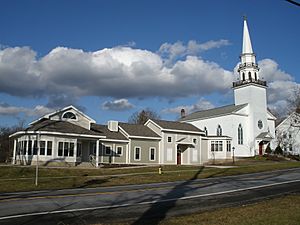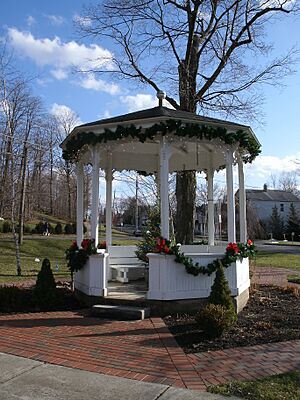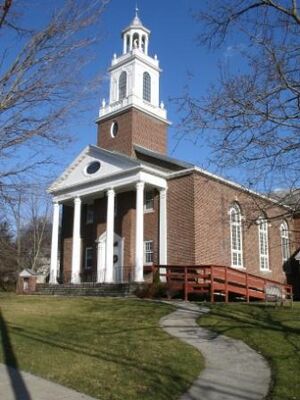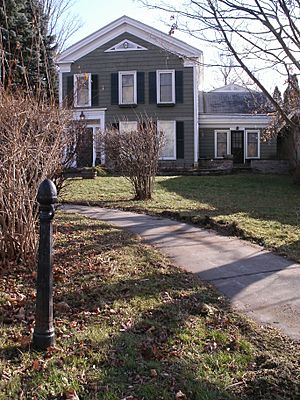Manlius Village Historic District facts for kids
Quick facts for kids |
|
|
Manlius Village Historic District
|
|
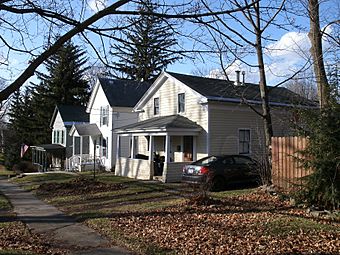
305, 307 and 309 Pleasant Street
|
|
| Location | Pleasant, Franklin, North, Clinton, and E. Seneca Sts., Manlius, New York |
|---|---|
| Area | 15 acres (6.1 ha) |
| Built | 1813 |
| Architectural style | Greek Revival, Italianate |
| NRHP reference No. | 73001232 |
| Added to NRHP | November 6, 1973 |
The Manlius Village Historic District is a special area in the village of Manlius, New York. It's like a time capsule, showing how a small American village looked long ago. This district covers about 15 acres and is full of old buildings. It was added to the National Register of Historic Places in 1973 because of its historical importance.
Contents
What is a Historic District?
A historic district is a group of buildings, structures, or sites. They are important because of their history or architecture. These areas are protected to keep their unique look and feel. The Manlius district has about 50 buildings that help tell its story. Most of these are old homes.
A Glimpse into the Past
The village of Manlius was started in 1813. Many of the buildings in the historic district were built around that time. Imagine what life was like back then!
Manlius was once an important stop on old travel routes. But later, bigger roads and canals like the Erie Canal were built elsewhere. This meant Manlius didn't grow as fast as other towns. Because of this, many of its old buildings were saved. It still feels like a village from the "turnpike era," a time when toll roads were common.
Cool Buildings and Styles
The Manlius Village Historic District has many interesting buildings. You can see different styles of architecture here. Two main styles are Greek Revival and Italianate.
- Greek Revival: This style was popular in the 1830s. Buildings often look like ancient Greek temples. They might have tall columns or special flat columns called pilasters. The house at 311 Pleasant Street is a great example of this style.
- Italianate: This style became popular later in the 19th century. Italianate homes often have low-pitched roofs, wide eaves, and tall, narrow windows.
Famous Buildings in the District
- Christ Episcopal Church: This church was built in 1813. It was even moved from its original spot in 1832!
- Smith Hall (Masonic Temple): Built between 1813 and 1816, this building is very special. In 1824, a third floor was added for the Masons, a social group. This room still has old murals painted by an artist named Fish. These paintings were covered by wallpaper for many years and found again in 1902!
- Old Baptist Church: Built in 1827, this church is in the Greek Revival style. It used to have a tall steeple, but that's gone now. It's now used for businesses.
- Bandstand in Academy Park: This cool structure was built in the 1880s. It's where bands would play music for the community.
- First Baptist Church: This church was built later, in 1929, in a style called neo-Federal.
Many of the buildings in the district are on Seneca Street, which was part of the old Seneca Turnpike. Others are on Pleasant Street, just one block north.
Why Manlius Stayed Special
The Manlius Village Historic District is important because it shows us what a small American village looked like in the 1800s. Because major transportation routes like the NYS Thruway bypassed Manlius, the village kept its old charm. Fires, remodels, and demolitions have changed some parts of Manlius, but this district remains a well-preserved piece of history.
Images for kids




